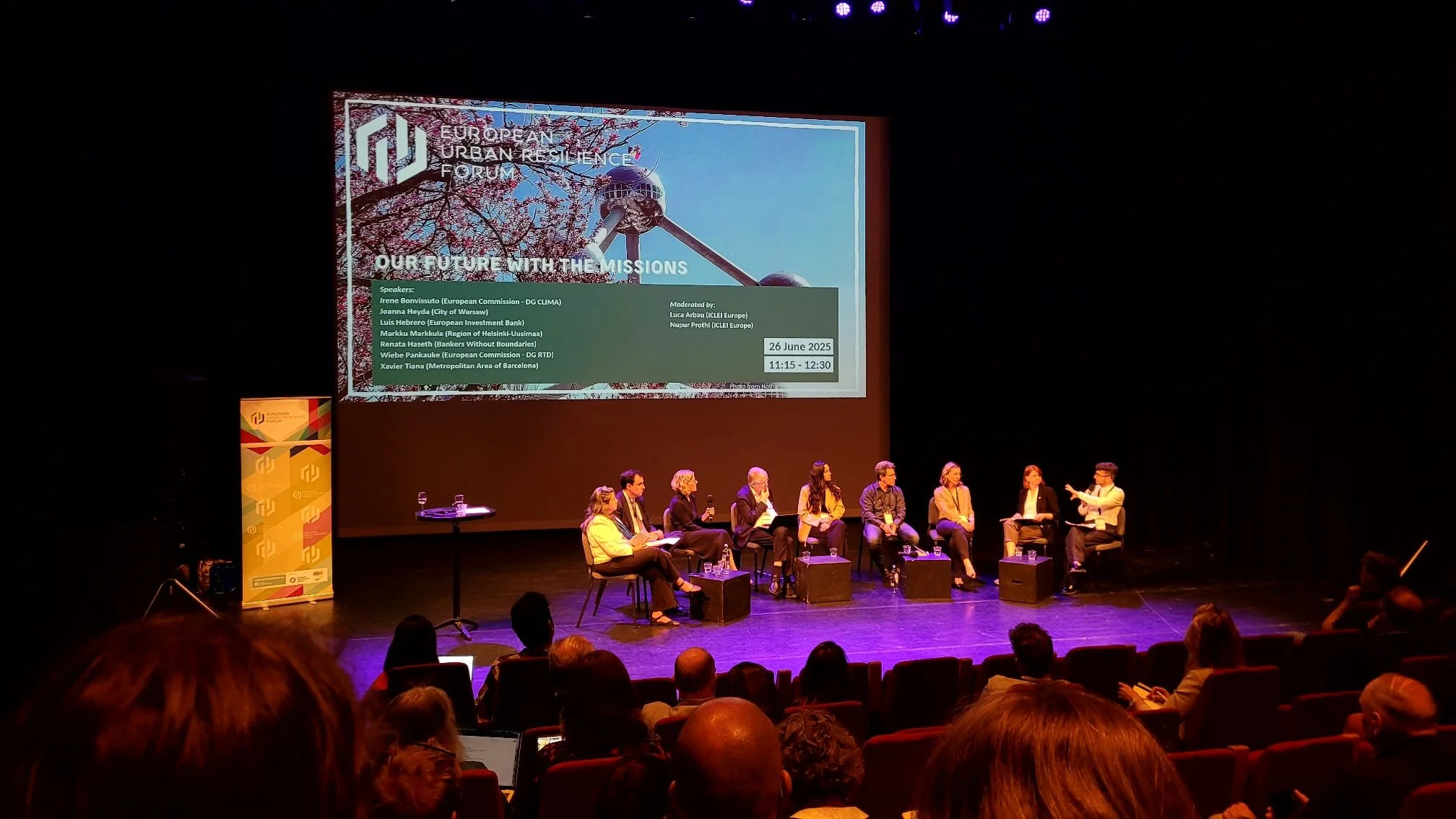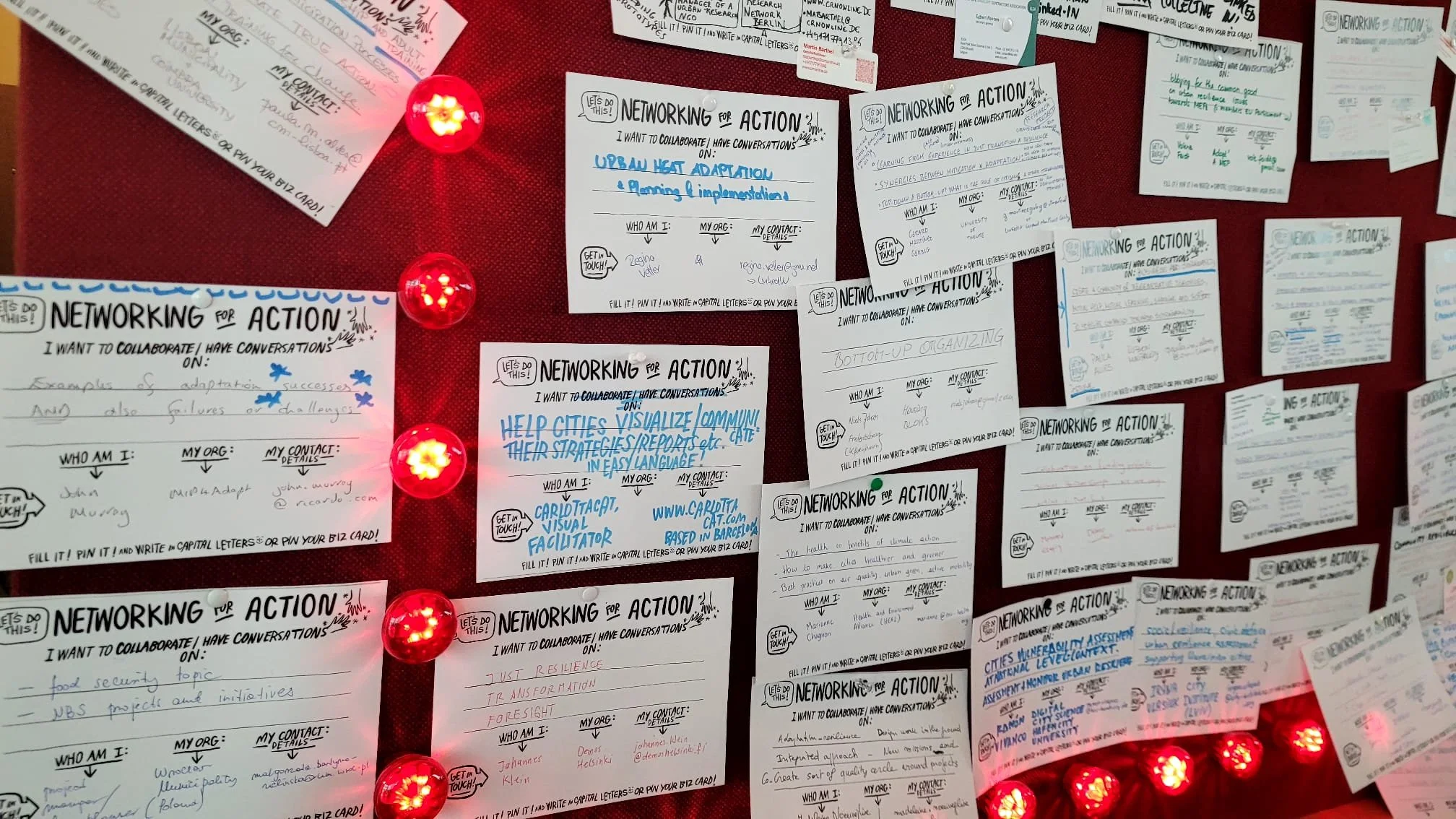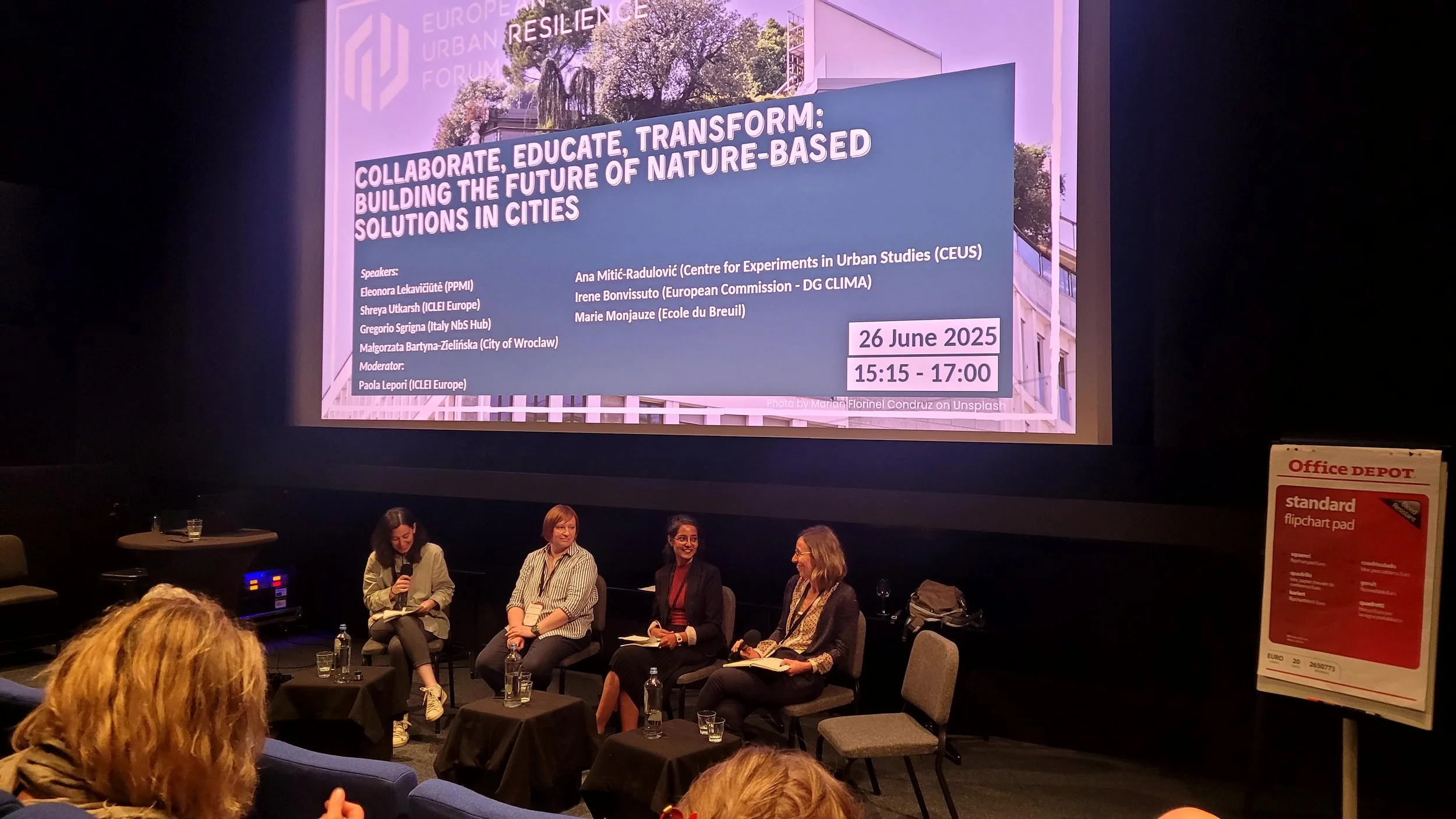The future of Nature-based Solutions in mitigating the climate crisis
GreenInCities attended EURESFO 2025, and this is what we learn
As partner of the GreenInCities consortium, Fab City Foundation was in attendance at the 2025 European Urban Resilience Forum (EURESFO) in Rotterdam on behalf of the project, where Nature-based Solutions (NbS) were featured for their importance in building urban resilience in a polycrisis, the convergence of climate change, biodiversity loss, social fragmentation, and geopolitical instability.
The event brought together policymakers, researchers, and city leaders across Europe to explore how NbS can scale up through the right combination of policy hooks, digital tools, and co-creation. A major theme was how water-related challenges and ecosystem fragmentation demand landscape-scale thinking. Water does not follow political borders, yet policies often do. As Dr. Boipelo Tshwene-Mauchaza, Programme Officer at UNEP-WCMC said, “water flows, not borders,” underscoring the urgency of designing governance mechanisms that match the scale and logic of ecological systems.
A consistent challenge echoed across panels was the lack of systemic thinking in urban governance and planning and the importance of co-creation with locals. Tools like the GreenComp framework (the European sustainability competency model) were highlighted as essential for equipping practitioners and citizens alike with the values, knowledge, and skills to support transformative sustainability. As discussed by Gregorio from the Italy NbS Hub, there is a pressing need for practitioner training programs and “NbS schools” to bring planners, researchers, and administrators into shared learning environments.
The values presented at EURESFO strongly align with GreenInCities’ mission leading in pilot cities, Prato, Nova Gorica, Barcelona, Athens and Helsinki. Blending digital tools, citizen science, and NbS to regenerate public spaces with an eye toward justice and biodiversity. A standout example is the work at the Besòs River mouth in Sant Adrià del Besòs (Barcelona) with its aims to transform the area, by creating a new nature observation point, an open-air lab and a naturalised area that will function as a climate shelter, prioritising the needs of both human and non-human stakeholders. GreenInCities, therefore, is advocating for a future where non-humans are active participants with their own inherent value and role in shaping resilient urban futures.
“Water flows, not borders”
Digital tools for climate resilience: Harnessing geospatial data and local insights
Digital tools and data-driven planning emerged as vital enablers of climate resilience, an approach strongly echoed within the GreenInCities project. Sophie Arena from the City of Dortmund's Environmental Department underscored the urgency of integrated planning that considers both critical infrastructure and shifting demographics. Through the Valorada project, Dortmund is piloting an app that helps citizens identify local heat risk areas using climate indicators and climate impact chains. These tools allow comparisons of current conditions with vulnerability scores, urban heat island exposure, and poverty rates, providing both historical and predictive insights. This resonates with GreenInCities' data-informed demonstrators, which integrate vulnerability mapping into the co-design of inclusive, nature-based interventions such as climate shelters and green corridors. Yet, a recurring challenge across projects remains the accessibility and usability of fragmented datasets. This highlights the importance of one of GreenInCities’ core principles: fostering cross-sector cooperation between municipalities, service providers, and tool developers to democratise climate intelligence.
“NbS are not a side project, they are central to achieving climate resilience, biodiversity recovery, and social equity. ”
Dr. Heli Ponto of Forum Virium Helsinki, a GreenInCities partner, illustrated this further through Regions4Climate, a Horizon Europe project developing a modular climate adaptation tool to support the strategic placement of cooling centres and urban greenery efforts that complement GreenInCities spatial planning and equity-driven regeneration. Similarly, Dr. Vanessa Reinhart from the Bochum Urban Climate Lab emphasised the value of accessible dashboards that merge knowledge, indicators, and tools into one platform, an approach aligned with GreenInCities’ mission to build inclusive, replicable digital ecosystems that empower communities and institutions alike. GreenInCities partners such as KTU (Kaunas University of Technology) and FCUP (University of Porto) are leading efforts to simulate the impact of interventions, monitor biodiversity, and support decision-making with real-time data.
Mainstreaming NbS through collective action
EURESFO 2025 reinforced that NbS are not a side project, they are central to achieving climate resilience, biodiversity recovery, and social equity. But their success depends on mainstreaming across policies, sectors, and cultures of practice. Whether through co-created climate shelters, open-air biodiversity labs, or interactive digital tools, GreenInCities is working at this intersection, bridging policy, practice, and community in pursuit of just and sustainable cities.
The call to action is clear: collaborate, educate, transform. If we are to address the realities of a polycrisis world, Nature-based Solutions must be not only implemented but reimagined, rooted in systemic change and shared responsibility.
“The call to action is clear: collaborate, educate, transform”




